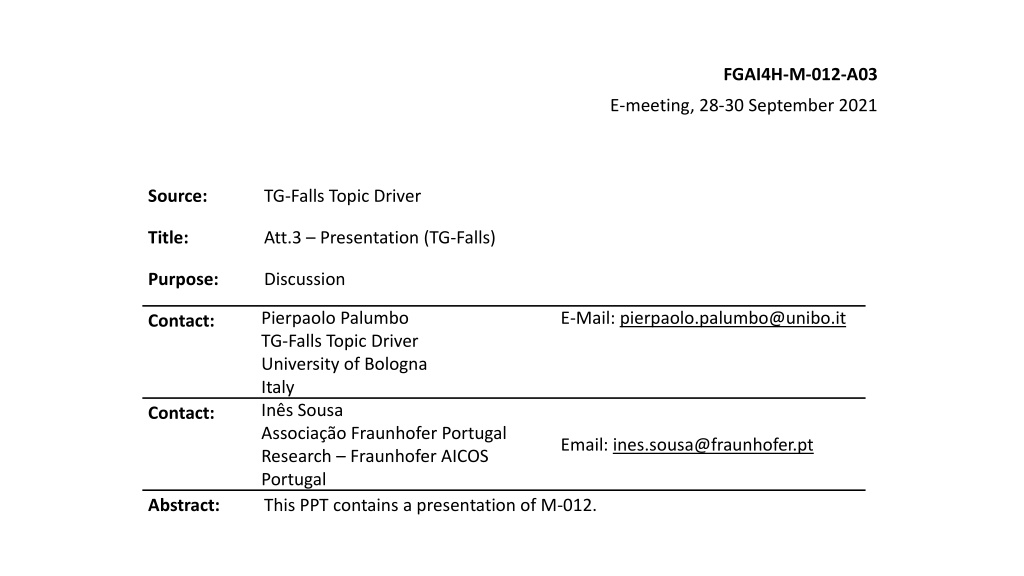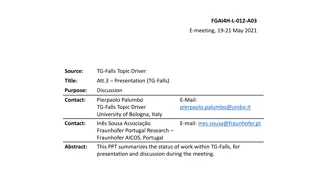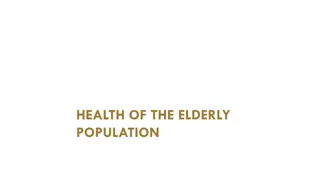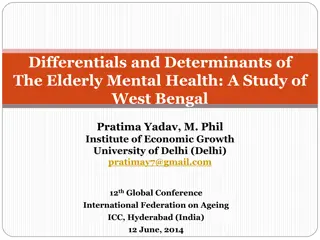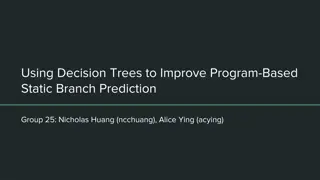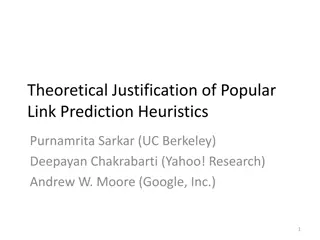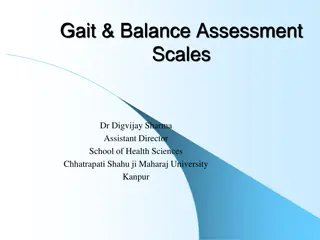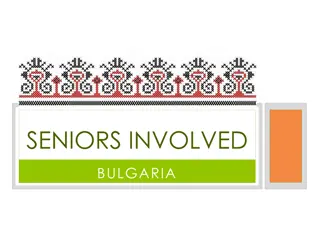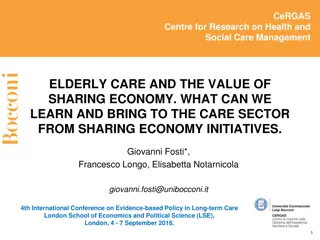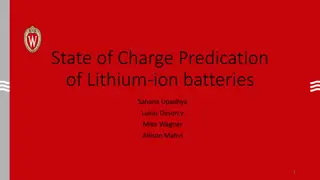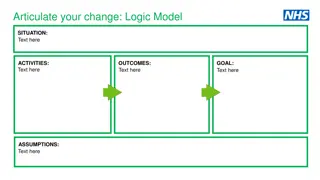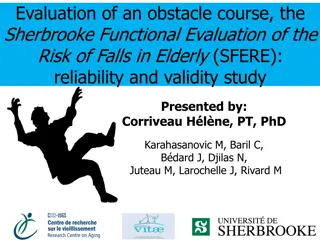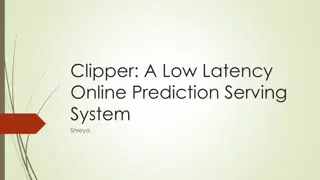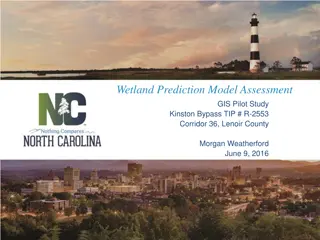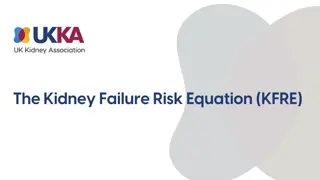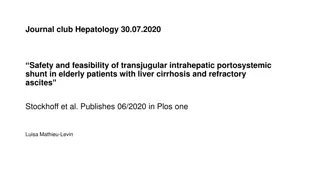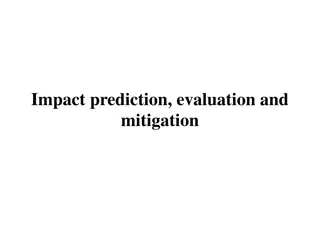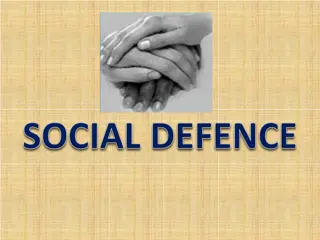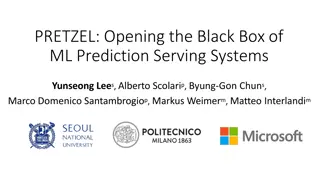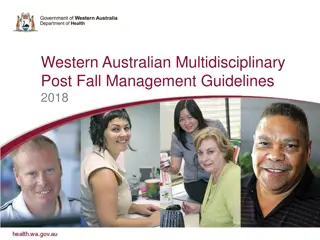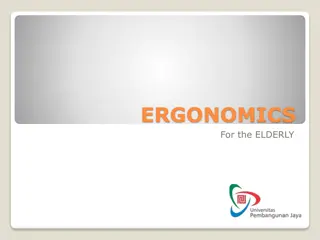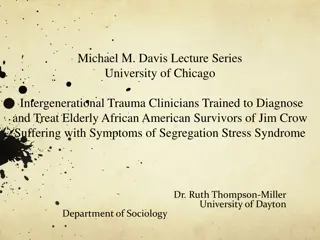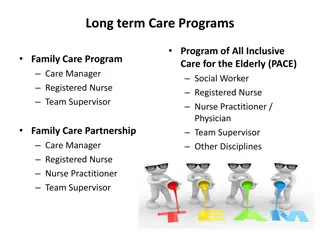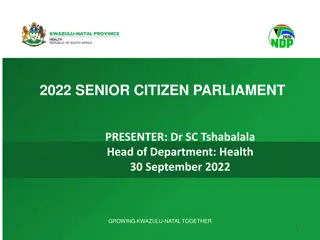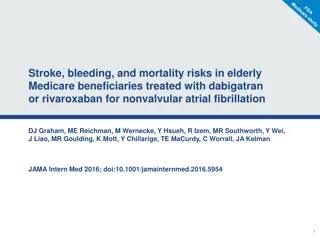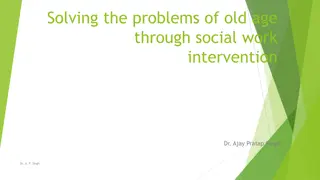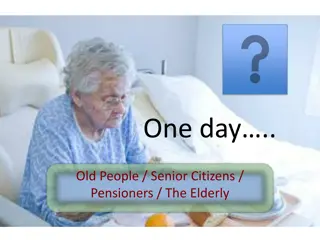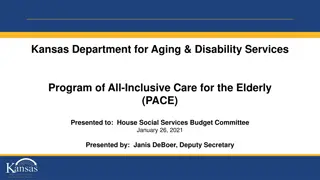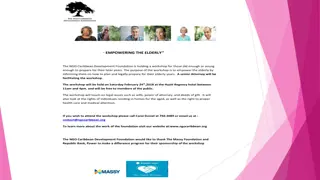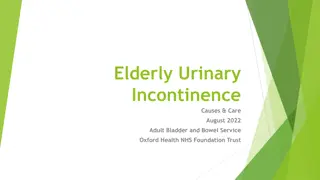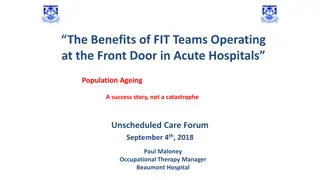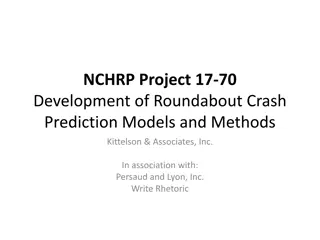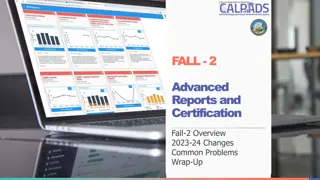AI in Fall Prediction Among Elderly: State of the Art and Potential Impact
Falls among the elderly are a significant concern globally. This presentation discusses AI-driven fall prediction models, including traditional tools like the Timed Up and Go Test, and the potential impact on reducing falls with validated models showing an AUC of 0.62-0.69. The discussion covers subject-specific risk scoring, sensor variables, and the importance of AI in decreasing falls by 15-20%.
Download Presentation

Please find below an Image/Link to download the presentation.
The content on the website is provided AS IS for your information and personal use only. It may not be sold, licensed, or shared on other websites without obtaining consent from the author. Download presentation by click this link. If you encounter any issues during the download, it is possible that the publisher has removed the file from their server.
E N D
Presentation Transcript
FGAI4H-M-012-A03 E-meeting, 28-30 September 2021 Source: TG-Falls Topic Driver Title: Att.3 Presentation (TG-Falls) Purpose: Discussion Pierpaolo Palumbo TG-Falls Topic Driver University of Bologna Italy In s Sousa Associa o Fraunhofer Portugal Research Fraunhofer AICOS Portugal This PPT contains a presentation of M-012. E-Mail: pierpaolo.palumbo@unibo.it Contact: Contact: Email: ines.sousa@fraunhofer.pt Abstract:
AI4H TG-Falls among the elderly 30th September 2021
Outline About the topic group Introduction Literature review and consensus process Benchmarking by the topic group Audit
About the topic group Meeting B (Lausanne) meeting M (e-meeting) fgai4htgfalls@lists.itu.int People (contributors or showing interest) In s Sousa, Fraunhofer AICOS, Portugal Pierpaolo Palumbo, University of Bologna, Italy Stefania Bandinelli, SOC Geriatria USL Toscana Centro, Italy Barry Greene, Chief Technology Officer, Kinesis Health Technologies, Ireland Arnab Paul, CEO Patient Planet, WHO Roster of Expert DigitalHealth, India Salman Khan, Assistant Professor in the department of electrical engineering, University of Engineering and Technology Peshawar, Pakistan Kim van Schooten, PhD, Human Frontier Science Program Postdoctoral Fellow, Conjoint Senior Lecturer, UNSW Medicine, UNSW Ageing Futures Institute, Australia Luca Palmerini, Assistant professor, University of Bologna, Italy
Introduction Falls are common, multifactorial, burdensome Falls are preventable (RR 0.7-0.8) falls Global Burden of Disease, 2019, https://vizhub.healthdata.org/
Subtopic, AI task Fall prediction: Subject-specific risk score of falling, within a given time window in the future, given information about the subject s risk factors for falls and/or their balance or motor ability
State of the art Traditional tools: Timed Up and Go Test (TUG), Tinetti Scale Guidelines (AGS/BGS, NICE, etc.) screening algorithms Different AI models proposed Clinical variables Sensor variables Few models validated (AUC 0.62-0.69) Potential impact: decrease of 15-20% NNT AUC = 0.57 (0.54-0.59) [1] D. Schoene et al., J. Am. Geriatr. Soc., 2013 [2] E. Barry et al., BMC Geriatr., 2014 [3] Panel of Falls in Older Persons American Geriatrics Society and British Geriatrics Society, J. Am. Geriatr. Soc., 2011 [4] A. Tiedemann, et al. Inj. Prev., 2012. [5] P. Palumbo et al., J. Am. Med. Dir. Assoc., 2016. [6] G. V. Gade et al., BMJ Open, 2021 [7] P. Palumbo et al., Aging Clin. Exp. Res., 2018
Literature review and consensus process Available datasets Eligibility requirements for datasets AI input (minimum set of variables, sensors, tests), labels (collection of falls) Validity, accuracy, potential for harmonization Ethical waiver Constraints on data management Eligibility requirements on AI algorithms Benchmarking methods, criteria for performance evaluations Target populations
Literature review and consensus process Steps 1. Definitions of scope and methods 2. Literature review 3. Delphi consensus 4. Integration and publication Literature review: existing ones as a basis Consensus process: Delphi Leverage the results of other standardization initiatives (Mobilise-D, OWEAR, etc) Priority list
Benchmarking platform System architecture Result publication
Benchmarking system dataflow v0 Future implementations Dataset identification FallSensing Literature screening, emails to authors, advertisement at meetings and conferences Eligibility check FallSensing considered eligible Literature review and an expert consensus process. Eligibility criteria on: data content (on AI input and label, including aspects related to validity, accuracy, and potential for harmonization), ethical waiver, constraints set by data owners on data management Dataset entry Minimal data standardization Versioning Dataset description document Lifecycle Undisclosed (98%)/publicly available (2%) Harmonization Versioning Dataset description document (population, variables and signals available, protocol, format, management rules) Lifecycle Accessible/undisclosed/ partly Data management
Benchmarking process Description of the benchmarking process and its rules will be visible to everyone Registration Disclosure of any previous data access Agreement on result publication Check by the Topic Group Sample records given to participants AI system submission Results provision to participants Report to publish
AI input Table for clinical variables + files for sensor recordings V0: standardization/harmonization kept to a minimum
AI output and label v0 AI output Subject-specific Probability to fall in a 12-month period, range 0-1 Ordered variable: higher numbers = higher risk Format and coding TBD Label {0,1} Future implementations AI output Expected number of falls Variable time window: 6-24 months Suggestions on preventive actions to take Others Label Integer, others...
Scores and metrics As a baseline comparison Example Dataset 1 v1 AI system 1 AI system 2 AI system 3 Time for TUG Applicable Yes No Yes Yes Probabilistic 0-1 No Yes Yes No AUC 0.65 -- 0.71 0.63 Sensitivity 62% -- 58% 40% Specificity 74% -- 81% 72% Brier score -- -- 0.018 -- Maximizing Youden index Future implementations: calibration intercept and slope, other metrics...
Transversal work with WG Meeting with Marc Lecoultre and Pradeep Balachandran (July 2021) Participation in the ML4H Trial Audits 2.0 project
